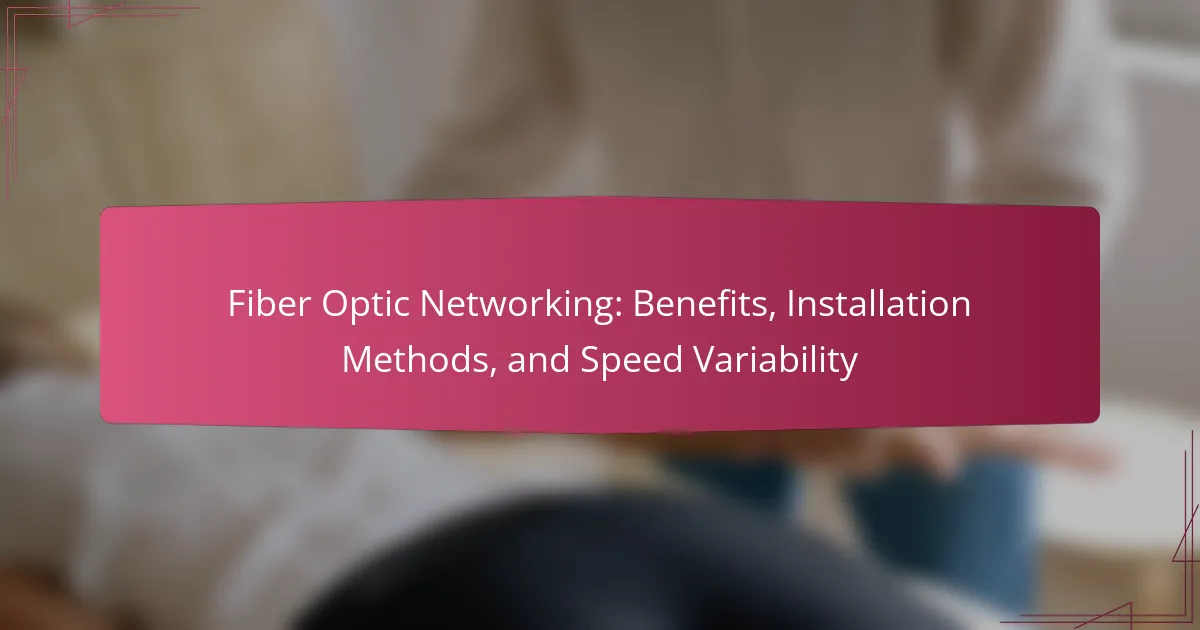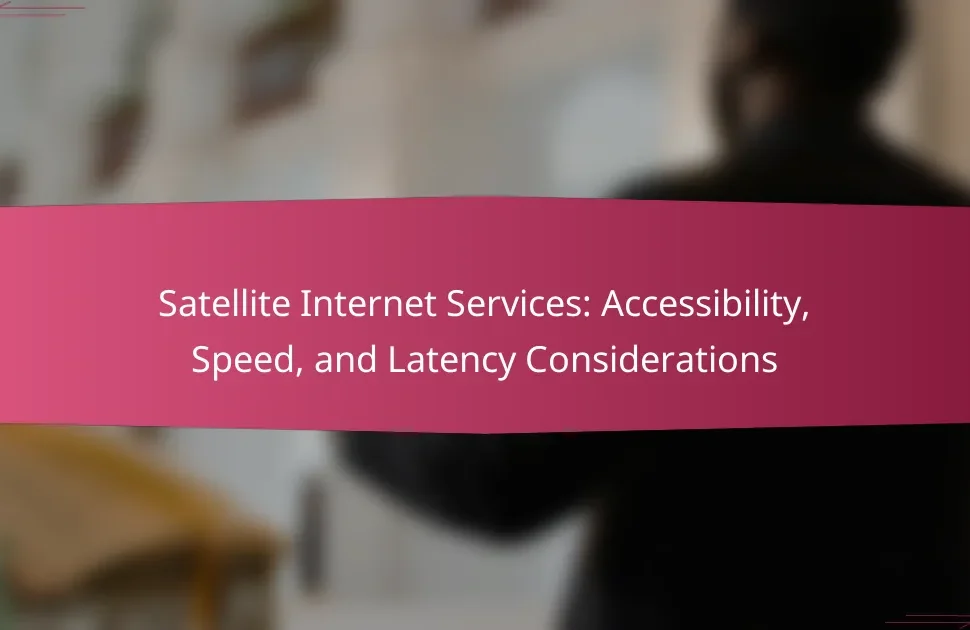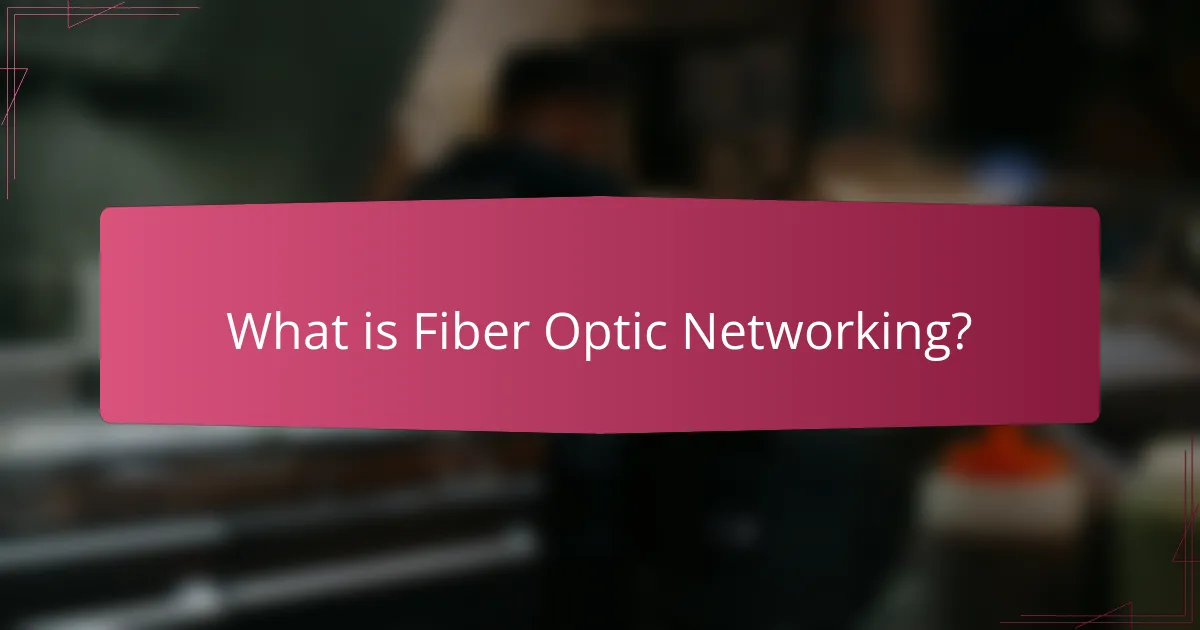
What is Fiber Optic Networking?
Fiber optic networking is a technology that uses light to transmit data over long distances. It involves the use of fiber optic cables, which are made of glass or plastic fibers. These cables carry light signals that represent data, allowing for high-speed internet and telecommunications. Fiber optic networks are known for their high bandwidth and low latency. They can transmit data at speeds exceeding 1 Gbps. Additionally, fiber optic cables are less susceptible to interference compared to traditional copper cables. This technology is increasingly used in both residential and commercial applications. Fiber optic networking has become a standard for modern communication infrastructure.
How does Fiber Optic Networking work?
Fiber optic networking works by transmitting data as light pulses through thin strands of glass or plastic fibers. These fibers are designed to carry light over long distances with minimal loss. The core of the fiber is surrounded by a cladding layer, which reflects light back into the core, allowing for total internal reflection. This principle enables the efficient transmission of data at high speeds. Fiber optic networks can support bandwidths significantly higher than traditional copper cables. For instance, single-mode fibers can transmit data over distances exceeding 40 kilometers without significant signal degradation. This technology is widely used in telecommunications and internet services due to its speed and reliability.
What are the key components of Fiber Optic Networking?
The key components of fiber optic networking are fiber optic cables, connectors, transceivers, and network switches. Fiber optic cables transmit data as light signals through glass or plastic fibers. Connectors join fiber optic cables to devices or other cables, ensuring a secure connection. Transceivers convert electrical signals to optical signals and vice versa, facilitating communication between devices. Network switches manage data traffic within the network, directing signals to their intended destinations. Together, these components enable high-speed data transmission over long distances with minimal loss.
How do light signals transmit data in Fiber Optic Networking?
Light signals transmit data in Fiber Optic Networking through the principle of total internal reflection. This occurs when light travels through a glass fiber core and hits the core-cladding boundary at a specific angle. The light is then reflected back into the core, allowing it to travel long distances with minimal loss.
Data is encoded into light signals using modulation techniques, like amplitude or frequency modulation. These modulated light signals carry information as they propagate through the fiber.
The high bandwidth capacity of fiber optics allows for the transmission of vast amounts of data simultaneously. According to a report by the International Telecommunication Union, fiber optic networks can achieve speeds exceeding 1 Gbps. This efficiency makes fiber optics a preferred choice for high-speed internet and telecommunications.
What are the benefits of Fiber Optic Networking?
Fiber optic networking offers high-speed data transmission with minimal signal loss. It supports bandwidths of over 1 Gbps, making it ideal for high-demand applications. Fiber optics are less susceptible to electromagnetic interference compared to copper cables. This technology can transmit data over longer distances without degradation, often exceeding 10 kilometers. Fiber optic networks also provide enhanced security, as they are more difficult to tap into without detection. Additionally, they require less maintenance due to their durability and resistance to environmental factors. The use of fiber optics can lead to lower long-term operational costs. These benefits make fiber optic networking a preferred choice for businesses and telecommunications.
How does Fiber Optic Networking compare to traditional copper wiring?
Fiber optic networking offers higher speed and bandwidth compared to traditional copper wiring. Fiber optics can transmit data at speeds exceeding 1 Gbps, while copper typically maxes out around 100 Mbps. Additionally, fiber optic cables have a greater capacity for data transmission over long distances without signal degradation. In contrast, copper wiring can suffer from interference and attenuation, limiting its effective range. Fiber optics are also more resistant to environmental factors, such as electromagnetic interference. This durability contributes to lower maintenance costs over time. According to the Fiber Optic Association, fiber optic networks can support bandwidths of up to 100 Gbps. This makes fiber optics a superior choice for modern networking needs.
What specific advantages does Fiber Optic Networking provide for businesses?
Fiber optic networking provides businesses with high-speed data transmission. It offers bandwidth capabilities that can exceed 1 Gbps, significantly enhancing communication efficiency. Fiber optics are less susceptible to interference compared to copper cables. This results in clearer signals and reduced downtime. Additionally, fiber optic networks have longer transmission distances without signal loss, making them ideal for expansive business operations. They also consume less power, leading to lower operational costs. The durability of fiber optics ensures a longer lifespan with minimal maintenance needs. These advantages contribute to improved productivity and cost-effectiveness for businesses.
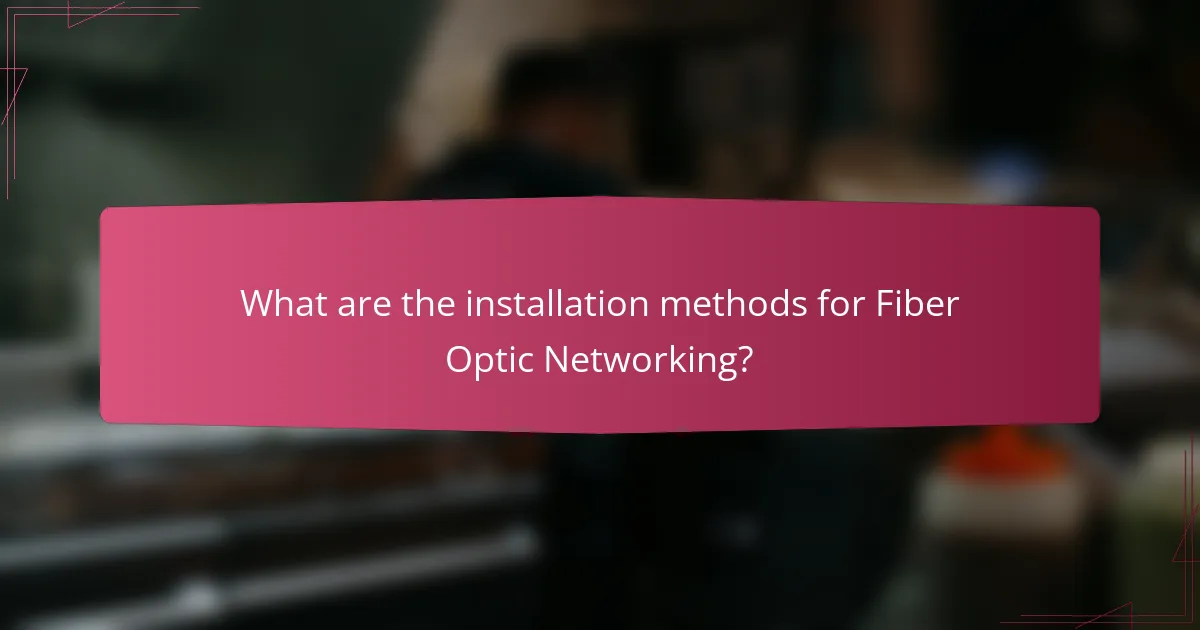
What are the installation methods for Fiber Optic Networking?
The installation methods for fiber optic networking include aerial, underground, and conduit installations. Aerial installation involves placing fiber cables on utility poles. This method is often quicker and less expensive than underground options. Underground installation requires digging trenches to lay cables directly in the ground. It is more protected from environmental factors but can be costlier due to labor and excavation. Conduit installation involves placing fiber cables inside protective tubes. This method allows for easier upgrades and repairs. Each method has its advantages and is chosen based on specific project requirements and environmental considerations.
How is Fiber Optic cabling installed?
Fiber optic cabling is installed by following a series of specific steps. First, the installation site is assessed for the best routing path. Then, the necessary tools and materials, including fiber optic cables, connectors, and tools, are gathered. Next, the cable is carefully routed through conduits or ducts.
After routing, the ends of the fiber optic cables are stripped and prepared for termination. Connectors are then attached to the ends of the cables. Testing is conducted to ensure signal integrity and performance standards are met. Finally, the installation is documented for future reference and maintenance.
What tools are required for Fiber Optic installation?
Fiber optic installation requires specific tools for effective execution. Essential tools include a fiber optic cable [censured] for removing the protective coating. A cleaver is necessary for making precise cuts on the fiber. Fusion splicers are used to join two fiber ends with high precision. Additionally, a power meter and light source are needed for testing signal strength. An OTDR (Optical Time Domain Reflectometer) is crucial for diagnosing faults in the network. Lastly, a visual fault locator helps in identifying breaks in the fiber. Each tool plays a pivotal role in ensuring successful fiber optic installation.
What are the common techniques used in Fiber Optic installation?
Common techniques used in fiber optic installation include fusion splicing, mechanical splicing, and pre-terminated connectors. Fusion splicing involves joining two fiber ends using heat to create a continuous optical path. This technique provides low loss and high strength, making it a preferred choice for permanent installations. Mechanical splicing uses a specialized alignment fixture to hold fiber ends together, allowing light to pass through with minimal loss. This method is quicker than fusion splicing but may not offer the same durability. Pre-terminated connectors allow for faster installation by using factory-terminated cables with connectors that can be plugged directly into equipment. Each technique has specific applications based on project requirements and environmental conditions.
What challenges are faced during Fiber Optic installation?
Fiber optic installation faces several challenges. These include the need for specialized skills and training. Proper handling of fiber cables is crucial to avoid damage. Environmental factors can complicate outdoor installations. Permitting and regulatory compliance may delay projects. Cost management is essential due to expensive materials and equipment. Coordination with local utilities can also present obstacles. Lastly, ensuring network reliability requires thorough testing and troubleshooting. These challenges highlight the complexity of fiber optic installation.
How can installation challenges be mitigated?
Installation challenges can be mitigated through careful planning and preparation. Identifying potential obstacles before installation is crucial. Conducting site surveys can reveal issues such as physical barriers or existing infrastructure. Training installers on specific techniques for fiber optic installation enhances efficiency. Utilizing proper tools and equipment reduces the risk of errors. Implementing a phased installation approach allows for adjustments as needed. Following industry best practices can streamline the process and minimize complications. Research indicates that thorough preparation can cut installation time by up to 30%.
What are the best practices for successful Fiber Optic installation?
The best practices for successful fiber optic installation include proper planning and site assessment. Conduct a thorough site survey to identify potential obstacles. Ensure the installation path is clear of debris and hazards. Use appropriate tools and equipment for handling fiber optic cables. Follow manufacturer guidelines for cable bending and termination. Maintain cleanliness to prevent contamination of fiber ends. Test connections with an optical time-domain reflectometer (OTDR) after installation. Document the installation process for future reference. These practices enhance performance and reliability in fiber optic networks.
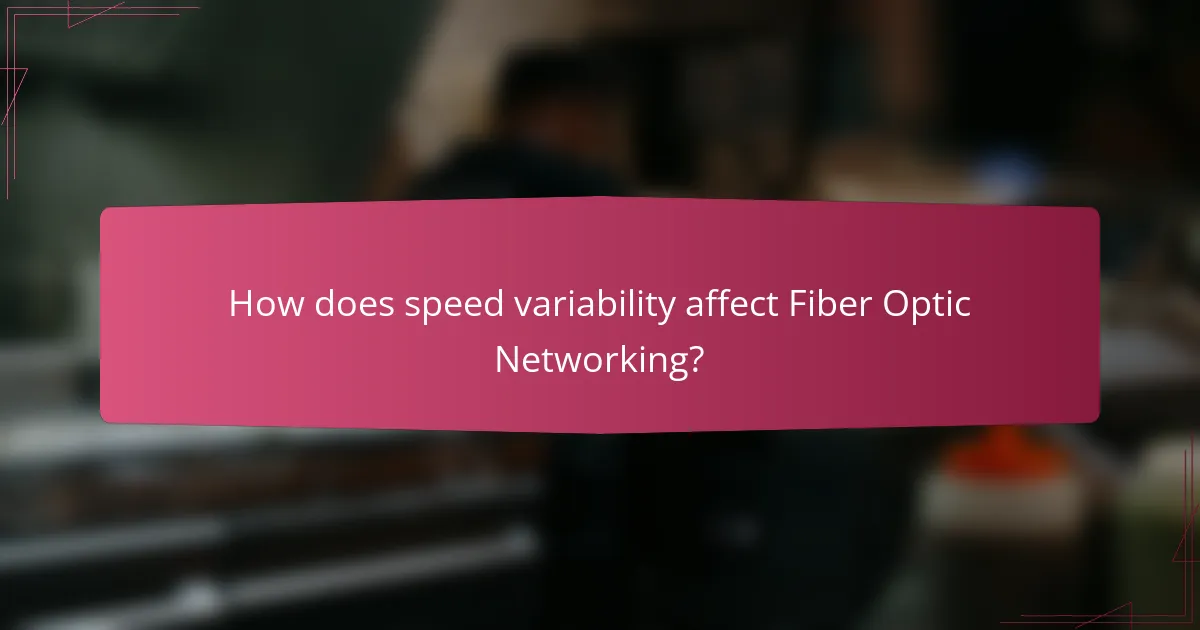
How does speed variability affect Fiber Optic Networking?
Speed variability can significantly impact Fiber Optic Networking performance. It affects data transmission rates and overall network efficiency. High speed variability may lead to packet loss and increased latency. This can result in slower internet speeds and degraded service quality. Consistency in speed is crucial for applications like video streaming and online gaming. Research indicates that stable speeds improve user experience and network reliability. For instance, a study by the Federal Communications Commission found that consistent broadband speeds reduce buffering and enhance streaming quality. Thus, managing speed variability is essential for optimizing Fiber Optic Networking.
What factors influence the speed of Fiber Optic Networks?
The speed of Fiber Optic Networks is influenced by several key factors. These include the type of fiber used, such as single-mode or multi-mode fiber. Single-mode fiber allows for higher speeds over longer distances. The quality of the fiber installation also plays a significant role. Poorly installed fibers can result in signal loss and reduced speeds. Additionally, the equipment used, such as routers and switches, impacts network speed. Higher quality equipment can process data more efficiently. Network congestion is another factor. More users on the network can lead to slower speeds. Lastly, environmental factors like temperature and physical obstructions can affect signal transmission. Each of these factors contributes to the overall performance of fiber optic networks.
How does distance impact Fiber Optic Network speed?
Distance negatively impacts Fiber Optic Network speed. As the distance between the transmission source and the receiver increases, signal attenuation occurs. This attenuation leads to a reduction in signal strength. Longer distances can also introduce more dispersion of the light signal. This dispersion can cause data loss and errors. For example, at distances over 100 kilometers, signal degradation becomes significant. Studies show that beyond this range, repeaters or amplifiers are necessary to maintain speed. Therefore, maintaining shorter distances is crucial for optimal Fiber Optic Network performance.
What role do network configurations play in speed variability?
Network configurations significantly influence speed variability in fiber optic networks. The arrangement of network components affects data transmission efficiency. Factors such as routing protocols, bandwidth allocation, and network topology play critical roles. For instance, improper routing can lead to congestion, causing delays. Additionally, the choice of equipment and its configuration impacts overall performance. Research indicates that optimized configurations can enhance speed consistency. A study by Cisco highlighted that well-designed networks can achieve up to 99% efficiency in data transfer rates. Thus, the effectiveness of network configurations directly correlates with speed variability in fiber optic systems.
What are the common speed benchmarks for Fiber Optic Networks?
Common speed benchmarks for fiber optic networks include 1 Gbps, 10 Gbps, and 100 Gbps. These benchmarks represent standard speeds used in various applications. For instance, 1 Gbps is commonly used for residential internet. Businesses often utilize 10 Gbps for improved performance. High-capacity networks may reach speeds of 100 Gbps. Fiber optic technology supports these high speeds due to its ability to transmit data over long distances without significant loss. According to the Federal Communications Commission, fiber optic connections can deliver speeds exceeding 1 Gbps in many areas. This capability makes fiber optic networks a preferred choice for high-speed internet access.
How do different Fiber Optic types affect speed performance?
Different fiber optic types significantly affect speed performance. Single-mode fiber optics provide higher speeds over longer distances. They support data rates up to 100 Gbps or more. This is due to their smaller core diameter, allowing light to travel straight down the fiber. Multi-mode fiber optics, on the other hand, are better for shorter distances. They typically support speeds of up to 10 Gbps. The larger core diameter leads to modal dispersion, which can reduce speed over longer runs. In practical applications, single-mode fibers are preferred for long-haul telecommunications. Multi-mode fibers are commonly used within buildings or campuses. The choice between these types directly impacts network speed and efficiency.
What is the expected speed range for residential versus commercial Fiber Optic Networks?
Residential fiber optic networks typically offer speeds ranging from 50 Mbps to 1 Gbps. In contrast, commercial fiber optic networks can provide speeds from 1 Gbps to 10 Gbps or more. Residential users generally require lower bandwidth for activities like streaming and browsing. Commercial users often need higher speeds for data-intensive applications and multiple users. According to the Fiber Broadband Association, the average speed for residential fiber is around 300 Mbps. For commercial applications, speeds can exceed 10 Gbps, depending on the service provider and infrastructure.
What tips can enhance Fiber Optic Network performance?
To enhance Fiber Optic Network performance, ensure proper installation and maintenance. Use high-quality fiber cables to minimize signal loss. Regularly inspect connections for dirt or damage, as these can degrade performance. Implement appropriate bending radius during installation to prevent fiber breakage. Utilize network monitoring tools to identify and resolve issues promptly. Optimize network design by minimizing the number of splices and connectors. Keep the environment controlled to avoid temperature fluctuations that can affect performance. Following these practices can significantly improve network reliability and speed.
Fiber optic networking is a technology that utilizes light to transmit data over long distances through fiber optic cables, offering high-speed internet and telecommunications. The article covers the workings of fiber optic networking, its key components, and the benefits it provides, such as high bandwidth and low latency. It also discusses various installation methods, common challenges faced during installation, and best practices for enhancing performance. Additionally, the article examines how speed variability impacts network performance and the factors influencing speed, including fiber type and network configuration.
